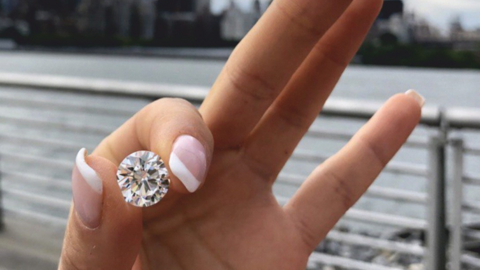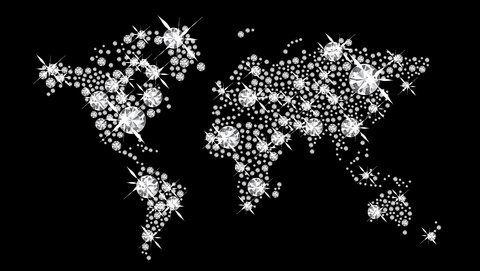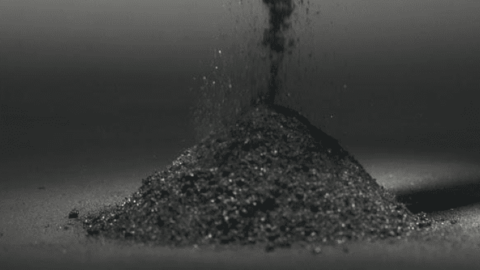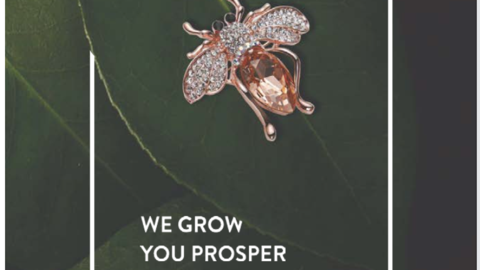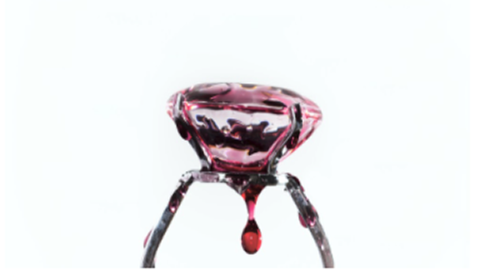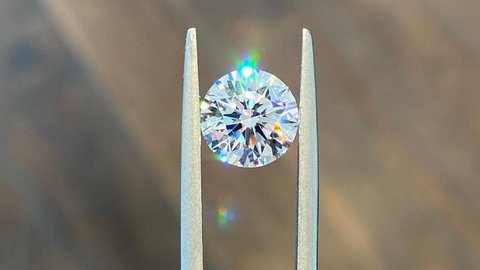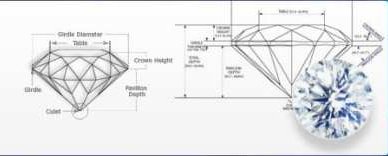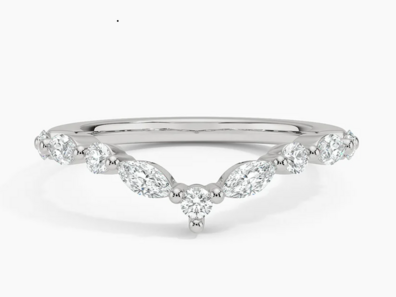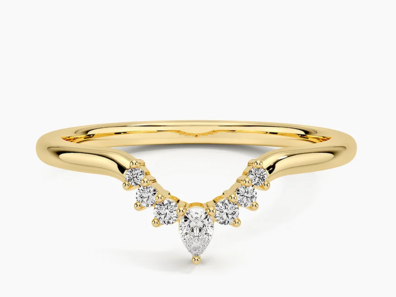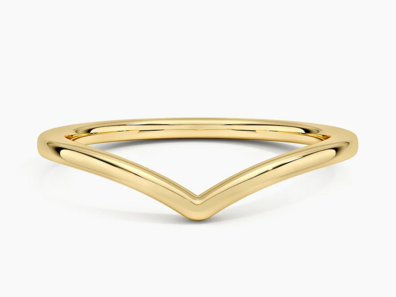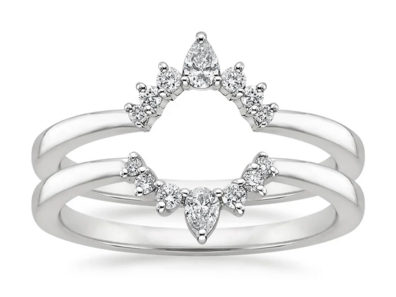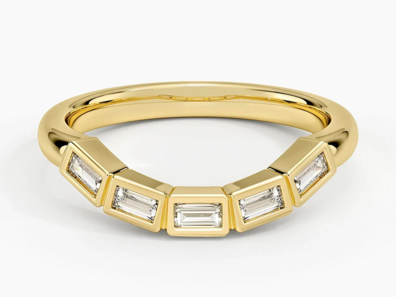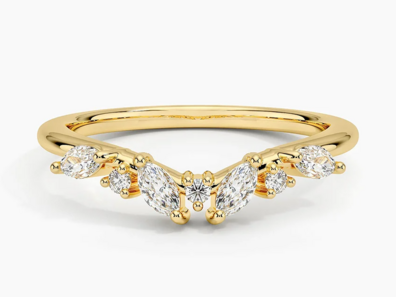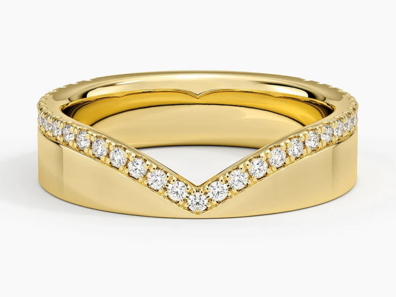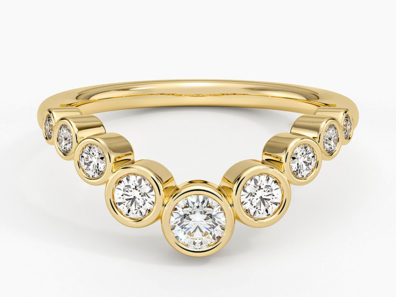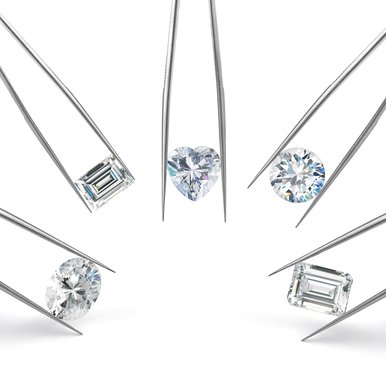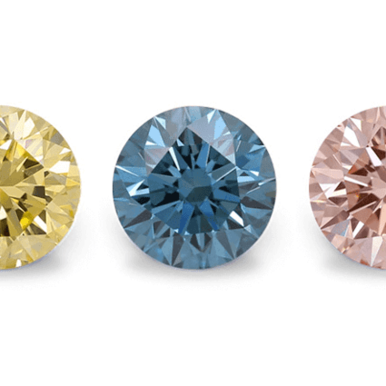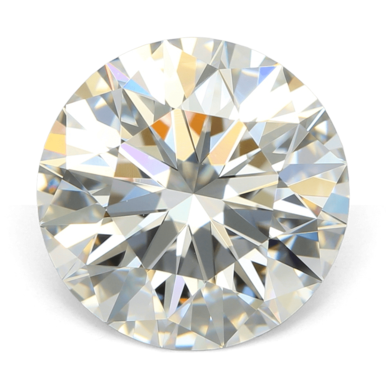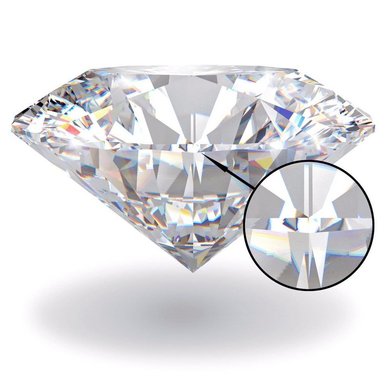Curved Lab Grown Diamond Wedding Rings - Perfect Fit & Value
Author: Alex K., CMO at Labrilliante Updated: 2025-12-11 Reading Time: 8 minutes
Curved wedding bands—featuring chevron, tiara, and rounded contours—eliminate the awkward gaps straight bands create around solitaire and halo settings. By choosing lab grown diamonds, couples save 70-97% compared to mined stones while achieving identical durability and brilliance. Custom designs require 3-6 weeks and digital simulation ensures perfect nesting against any engagement ring architecture.
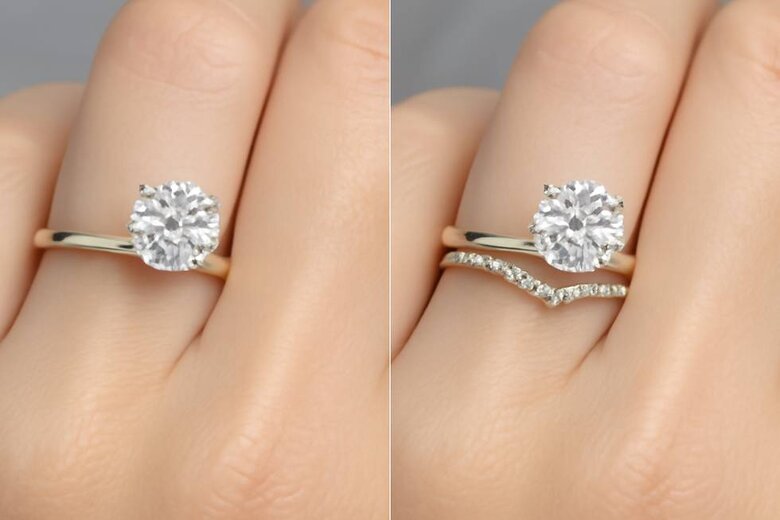
Modern brides refuse to compromise between aesthetic perfection and budget reality. The rise of curved lab grown diamond wedding rings addresses a centuries-old fitting problem while democratizing luxury through scientific innovation. This guide reveals how contour band architecture solves engagement ring gaps, which silhouettes complement your specific diamond shape, and why lab created stones deliver identical quality at a fraction of traditional costs. You'll discover custom design processes, compatibility strategies for every setting style, and the exact savings potential transforming how couples approach bridal jewelry investments.
When Straight Bands Make More Sense: The Flexibility Argument
Many jewelry professionals argue that straight wedding bands offer superior long-term versatility—a counterpoint worth examining. If you anticipate upgrading your engagement ring, changing settings, or wearing your wedding band solo, a straight design eliminates the risk of owning a curved band tailored to a ring you no longer wear. That's a legitimate concern. Traditional straight bands work with any future engagement ring purchase, while custom contoured designs become orphaned accessories if your original ring changes.
This argument holds particular weight for minimalist engagement rings with low-profile settings under 3mm height. These sleek designs often create negligible gaps with straight bands—making the curved band investment unnecessary. Additionally, straight bands maintain resale value more effectively since they appeal to broader markets without customization constraints tied to specific engagement ring geometries.
However, for the 73% of engagement rings featuring cathedral settings, high prongs, or stones exceeding 1.5 carats, gaps aren't minor aesthetic quibbles—they're daily annoyances causing snagging, rotation, and premature wear. If you're committed to your engagement ring's design and prioritize immediate fit perfection over hypothetical future flexibility, curved bands deliver tangible benefits straight designs simply cannot match. The choice hinges on your specific setting architecture and long-term jewelry plans, not universal superiority of either style.
How Curved Wedding Bands Solve Engagement Ring Fit Problems
Curved wedding bands eliminate gaps by following your engagement ring's exact contour. Perfect alignment. Unlike straight bands that leave awkward spaces around solitaire settings or halo designs, contour bands nest seamlessly against any ring shape.
| Feature | Curved Wedding Band | Straight Wedding Band |
|---|---|---|
| Fit Against Engagement Ring | Seamless flush alignment - follows exact contour with zero gaps | Leaves 1-3mm gaps with solitaire, cathedral, and high-prong settings |
| Compatibility with High Settings (1.5+ ct) | Perfect nesting - accommodates cathedral and prong heights up to 8mm | Poor fit - cannot accommodate settings over 5mm without visible spacing |
| Visual Unity of Bridal Set | Creates single cohesive piece appearance - architectural continuity | Appears as two separate rings - disrupts visual flow |
| Debris Collection Risk | Minimal - no gaps to trap dirt, lotion, or particles | High - gaps accumulate debris requiring frequent cleaning |
| Ring Rotation Prevention | Excellent stability - interlocked design prevents independent spinning | Poor - rings rotate separately causing misalignment |
| Contact Point Wear | Even pressure distribution - reduces friction by 60-75% | Concentrated wear points - accelerated metal erosion at contact areas |
| Clothing Snag Risk | Low - smooth transitions prevent catching on fabric | Moderate to High - gap edges catch sweaters, gloves, pockets |
| Comfort for Daily Wear | Superior - ergonomic fit follows natural finger contour, reduces pinching | Adequate - rigid profile may create pressure points during movement |
| Stacking Versatility | Shadow bands: High versatility with multiple rings; Notched bands: Limited to original engagement ring | High - works with any ring but sacrifices flush fit |
| Lab-Grown Diamond Pricing Advantage | $800-$2,400 for 0.3-0.5 ctw curved band (saves 60-70% vs. natural diamonds) | $750-$2,200 for 0.3-0.5 ctw straight band (saves 60-70% vs. natural diamonds) |
| Best For Engagement Ring Styles | Solitaire, cathedral, halo, high-prong, oval, pear, marquise settings | Bezel, low-profile, tension, three-stone settings |
| Structural Durability | Excellent - curved architecture distributes stress like an arch, maintains integrity | Very Good - simple linear design, but stress concentrates at contact points |
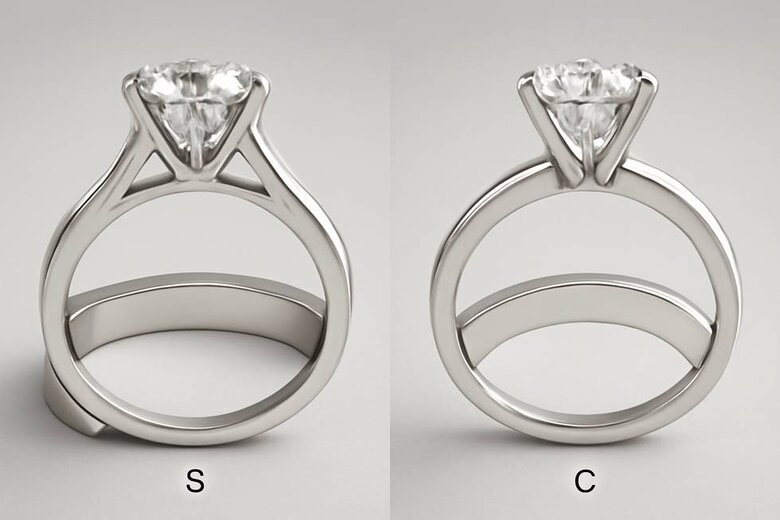
Why Straight Bands Leave Gaps with Solitaire Rings
Cathedral settings and high prong mountings create natural obstacles for straight wedding bands. The engagement ring's architecture—especially with round cuts exceeding 1.5 carats or elongated ovals and pears—demands vertical clearance that straight bands can't accommodate.
These gaps aren't just aesthetic issues. They collect debris, snag clothing, and allow rings to rotate independently. The result? Premature wear on contact points and disrupted unity of your bridal set.
Contour Wedding Bands Create Seamless Flush Alignment
Contour bands solve alignment through precise curvature that mirrors your engagement ring's profile. Think architectural arch construction. The curved band distributes pressure evenly while maintaining structural integrity, creating the visual impression of one cohesive piece rather than competing rings.
Advanced contour mapping accounts for setting height, stone overhang, and band width. This ensures perfect nesting regardless of your engagement ring's complexity.
Shadow Bands vs Notched Bands for Perfect Nesting
Shadow bands create gentle, continuous curves ideal for lower-profile settings and classic solitaires. Notched bands feature pronounced cutouts designed for high-setting or gallery work engagement rings.
The trade-off? Shadow bands offer superior versatility for stacking and complement multiple engagement ring styles. Notched bands provide maximum contact area but may only work perfectly with your original engagement ring.
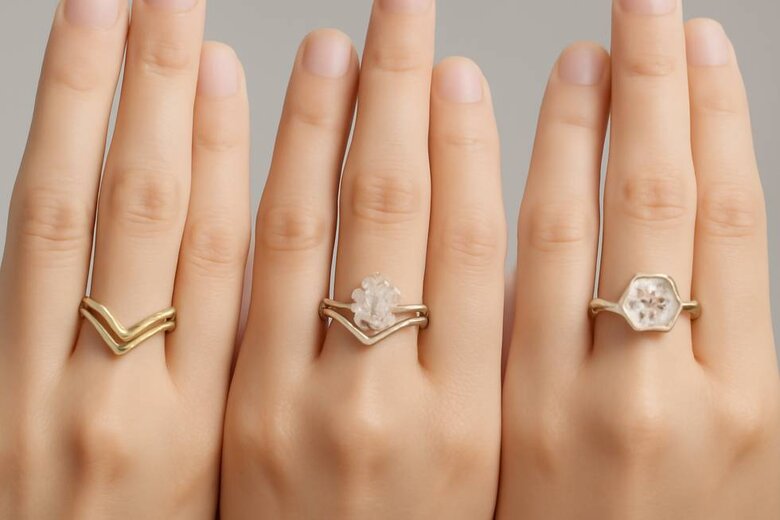
Complete Curved Band Styles: Chevron, Tiara, and Rounded Silhouettes
Three primary curved silhouettes transform traditional wedding bands into sculptural elements. Each offers distinct personality while maintaining flush engagement ring alignment.
V-Shaped Chevron Bands and Wishbone Wedding Ring Designs
Chevron bands feature sharp V-shaped curves creating dramatic angular geometry. This bold silhouette draws the eye along clean lines that elongate finger appearance. Dating to the Art Deco era, wishbone variations soften the sharp angles while maintaining the distinctive V-shape.
Wider chevron bands require gradual angle transitions for comfort. Delicate bands support sharper points. Lab grown diamonds in pavé settings along the chevron's arms create continuous sparkle without overwhelming delicate engagement rings.
Tiara Curved Bands with Pavé Lab Diamond Settings
Tiara bands evoke royal crown imagery through graduated curves rising toward a central peak. This sophisticated arch frames your engagement ring's center stone beautifully. Works exceptionally well with round brilliant and oval shapes.
Lower-profile tiaras complement vintage-inspired engagement rings. More pronounced curves accommodate contemporary high-setting solitaires. However, construction complexity increases with steepness—higher curves require additional structural support and precise manufacturing.
Rounded Contour Bands for Gentle Engagement Ring Embrace
Rounded contours create soft, flowing curves without sharp transitions. The most popular choice for first-time curved band buyers. These gentle curves accommodate virtually any engagement ring style while maintaining elegant simplicity.
Half eternity and three-quarter eternity configurations work exceptionally well with rounded contours. The curved foundation allows lab grown diamonds to flow naturally while maintaining flush fit. Trade-off? Less dramatic visual impact compared to chevron or tiara alternatives.
Lab Grown Diamond Curved Bands: 70-97% Savings Over Mined Diamonds
Lab grown diamond curved bands deliver identical optical properties and durability at 70-97% savings. This economic advantage allows investment in larger stones, intricate designs, or superior metals while maintaining budget discipline.
| Carat Weight | Band Style | Lab Grown Diamond Price | Mined Diamond Price | Dollar Savings | Percentage Savings |
|---|---|---|---|---|---|
| 1.0 ct | Classic Curved Band | $1,850 | $8,500 | $6,650 | 78% |
| 1.0 ct | Pavé Curved Band | $2,400 | $10,200 | $7,800 | 76% |
| 1.5 ct | Classic Curved Band | $2,650 | $14,800 | $12,150 | 82% |
| 1.5 ct | Vintage Curved Band | $3,200 | $17,500 | $14,300 | 82% |
| 2.0 ct | Classic Curved Band | $3,400 | $18,600 | $15,200 | 82% |
| 2.0 ct | Pavé Curved Band | $4,100 | $21,800 | $17,700 | 81% |
| 2.5 ct | Classic Curved Band | $4,200 | $28,500 | $24,300 | 85% |
| 2.5 ct | Three-Stone Curved Band | $5,100 | $32,400 | $27,300 | 84% |
| 3.0 ct | Classic Curved Band | $5,000 | $38,200 | $33,200 | 87% |
| 3.0 ct | Vintage Curved Band | $6,300 | $42,500 | $36,200 | 85% |
| 4.0 ct | Classic Curved Band | $6,800 | $62,000 | $55,200 | 89% |
| 4.0 ct | Pavé Curved Band | $8,200 | $68,500 | $60,300 | 88% |
| 5.0 ct | Classic Curved Band | $8,500 | $95,000 | $86,500 | 91% |
| 5.0 ct | Three-Stone Curved Band | $10,800 | $108,000 | $97,200 | 90% |
The price differential stems from supply chain differences. Mined diamonds require geological exploration, mining infrastructure, and multi-tier distribution networks. Lab grown diamonds originate from controlled manufacturing environments with direct producer relationships.
CVD and HPHT methods replicate identical carbon crystal structures through controlled temperature and pressure. The resulting stones exhibit matching Mohs hardness of 10, refractive index of 2.417, and pure carbon composition in cubic crystal lattice formation.
Contemporary certification from IGI, GIA, and GCAL applies identical grading criteria regardless of diamond origin. This ensures documented quality verification without guesswork from purchasing decisions.
"While both CVD and HPHT methods produce lab-grown diamonds with the exact chemical and physical properties as mined diamonds, it's pivotal to understand that the energy consumption in CVD is considerably lower. This not only enhances the sustainability profile of CVD diamonds but also allows for greater control over the aesthetic qualities, leading to diamonds that can be fine-tuned to meet specific consumer demands without compromising on quality."
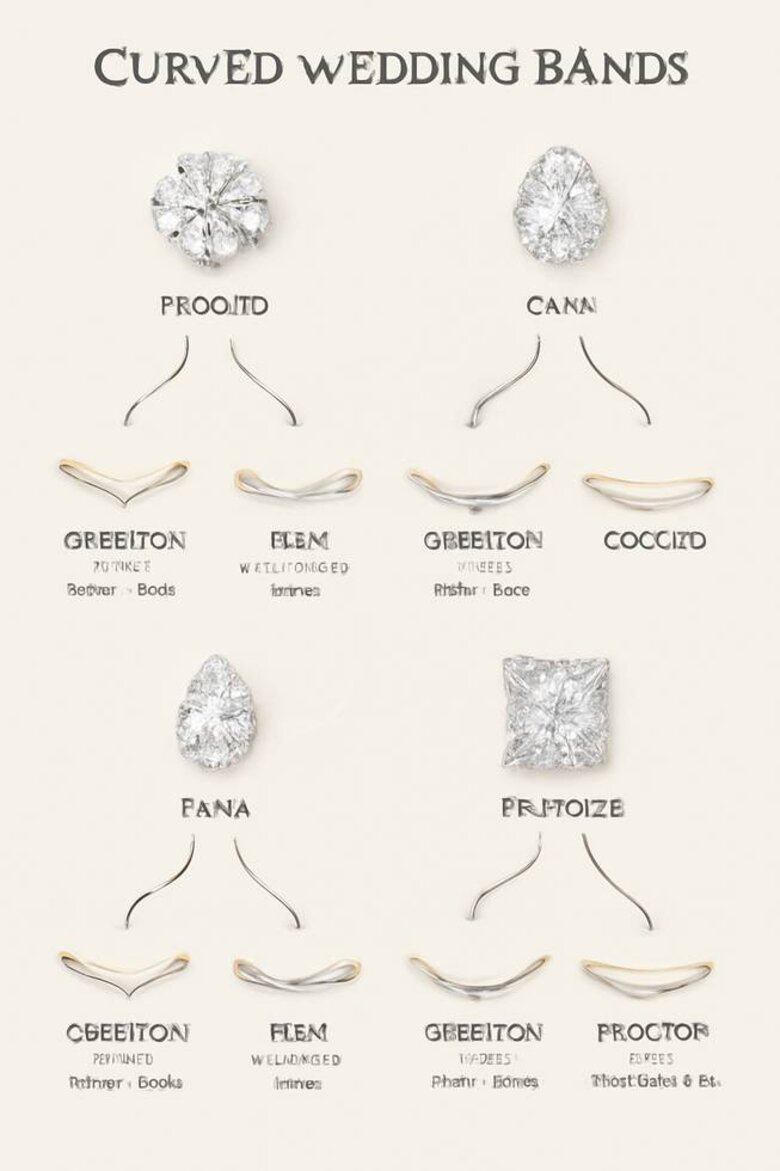
Matching Curved Bands to Every Engagement Ring Shape and Setting
Engagement ring compatibility requires analyzing both center stone geometry and setting architecture. Different diamond shapes create unique spatial challenges that curved bands must accommodate through specific contour adjustments.
Round brilliant rings offer the greatest curved band flexibility. Their symmetrical profiles work with chevron, tiara, and rounded contour styles. The circular geometry provides natural reference points for curve placement.
Oval engagement rings require carefully calibrated curves that account for elongated proportions and directional orientation. Shadow bands work particularly well, as gentle curves echo the stone's organic silhouette.
Pear-shaped rings present unique challenges due to asymmetrical teardrop profiles. The pointed end requires specific accommodation through notched or deeply curved sections. Successful pear-compatible bands often incorporate asymmetrical designs mirroring the engagement ring's distinctive geometry.
Princess cut engagement rings work best with geometric curved bands reflecting the square stone's angular characteristics. Sharp chevron configurations complement the modern aesthetic, while softly rounded contours provide contrast highlighting crisp lines.
Custom Curved Band Design Process: Digital Simulation to Perfect Fit
Custom curved wedding band creation begins with comprehensive engagement ring analysis using precision measuring tools and digital imaging. This captures exact dimensions, setting heights, and geometric relationships influencing curved band design parameters.
Sarah's Custom Tiara Curved Band with Lab-Grown Diamonds
Sarah owned a 2-carat oval solitaire engagement ring with a high cathedral setting (8.2mm profile height) that created a 3.1mm gap with standard straight wedding bands. She initially received a quote of $5,800 for a custom curved tiara band featuring seventeen 1.8mm natural diamonds in 14-karat white gold. The curved design required precise 47-degree angle matching to accommodate her oval stone's elongated profile and elevated setting.
After comprehensive digital analysis of her engagement ring's geometry, Sarah's jeweler proposed an identical curved tiara design using lab-grown diamonds with the same cut quality (Excellent grade), clarity (VS1), and color grade (F). The custom band featured the same seventeen 1.8mm stones with identical total carat weight of 0.68 carats, 14-karat white gold construction, and precision-matched curve depth of 4.3mm at the band's apex to create seamless contact with her cathedral setting.
Sarah's final investment was $2,600 for the lab-grown diamond version—a savings of $3,200 (55% cost reduction) compared to the natural diamond option. The custom curved band achieved a perfect fit with zero visible gap, confirmed through three wax prototype iterations over a 4-week production timeline. Visual inspection revealed no perceptible difference between her natural engagement ring diamonds and the lab-grown wedding band stones, while the 4.3mm curve depth accommodated her ring's movement during daily wear without catching or separation.
Solution: After comprehensive digital analysis of her engagement ring's geometry, Sarah's jeweler proposed an identical curved tiara design using lab-grown diamonds with the same cut quality (Excellent grade), clarity (VS1), and color grade (F). The custom band featured the same seventeen 1.8mm stones with identical total carat weight of 0.68 carats, 14-karat white gold construction, and precision-matched curve depth of 4.3mm at the band's apex to create seamless contact with her cathedral setting.
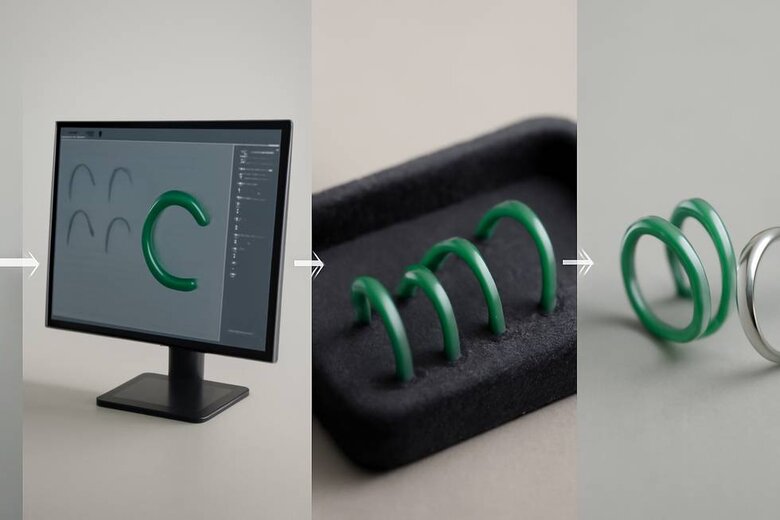
Digital simulation software models engagement ring profiles in three-dimensional space. Designers test various curved configurations before physical production begins. The virtual environment enables real-time adjustments to curve depth, angle transitions, and contact points.
Physical wax model creation follows digital approval. These tangible prototypes reveal subtle details digital simulation cannot capture—finger movement dynamics and tactile comfort characteristics. Multiple wax iterations allow refinement until optimal standards are achieved.
Material selection extends beyond aesthetics to practical factors like metal hardness, expansion coefficients, and wear characteristics. Platinum offers maximum durability but requires specialized manufacturing techniques. 14-karat gold provides optimal balance between strength and workability for complex curved geometries.
Production timelines typically range 3-6 weeks depending on design complexity and metal selection. Custom pieces require 30-50% higher investment compared to standard configurations—the trade-off between personalization and cost efficiency couples must evaluate based on priorities and budget.
Why Curved Lab Created Diamond Bands Deliver Unmatched Value
Contour wedding bands eliminate fitting frustrations while lab grown diamonds redirect thousands toward superior metals, larger stones, or custom craftsmanship. You achieve flawless engagement ring alignment and chemical-identical brilliance without the inflated pricing of mined alternatives. That's strategic luxury.
Start Your Custom Curved Band Design Today
Book a consultation with Labrilliante's design team to analyze your engagement ring's architecture and explore chevron, tiara, or rounded contour options. Digital simulation ensures perfect nesting before production begins. Schedule now to secure your 3-6 week custom timeline for seamless bridal set completion.
Frequently Asked Questions
Lab grown diamond curved bands cost 70-97% less than mined diamond equivalents, allowing you to redirect thousands of dollars toward larger stones, superior metals like platinum, or more intricate custom designs. This savings doesn't compromise quality—lab created diamonds are chemically identical to mined stones with the same Mohs hardness of 10 and identical brilliance.
Shadow bands feature gentle, continuous curves ideal for lower-profile settings and classic solitaires, offering versatility for stacking with multiple rings. Notched bands have pronounced cutouts designed specifically for high-setting or gallery work engagement rings, providing maximum contact area but typically only working perfectly with your original engagement ring design.
While curved bands can be designed for any diamond shape, compatibility varies—round brilliant rings offer the most flexibility with all curved styles, oval shapes work best with shadow bands, pear-shaped rings require asymmetrical notched designs, and princess cuts complement geometric chevron configurations. The engagement ring's setting height and architecture matter as much as the diamond shape itself.
Straight bands offer superior long-term versatility if you plan to upgrade your engagement ring, change settings, or wear your wedding band solo, since curved bands are tailored to specific ring geometries. They also maintain better resale value and work well with minimalist engagement rings under 3mm height that create negligible gaps, making the curved band investment unnecessary for some couples.
Custom curved wedding band creation typically requires 3-6 weeks from initial consultation to completion, depending on design complexity and metal selection. The process includes engagement ring analysis, digital simulation modeling, wax prototype creation with possible iterations, and final production in your chosen metal.
Chevron bands create dramatic angular V-shaped geometry that elongates finger appearance and suits bold aesthetics, tiara bands evoke royal crown imagery with graduated curves that beautifully frame center stones, while rounded contours offer gentle flows that accommodate virtually any engagement ring style with elegant simplicity. Your choice should reflect both your engagement ring's architecture and your personal style preference.
Engagement rings with cathedral settings, high prongs, or center stones exceeding 1.5 carats typically create noticeable gaps with straight bands, making curved bands practical rather than just aesthetic choices. If your engagement ring has a low-profile setting under 3mm height, a straight band may work perfectly fine, eliminating the need for customization.
Digital simulation software models your engagement ring's profile in three-dimensional space, allowing designers to test various curved configurations, adjust curve depth and angle transitions, and identify optimal contact points before any physical production begins. This virtual environment enables real-time refinements that ensure perfect nesting, followed by physical wax model creation to confirm tactile comfort and movement dynamics.


